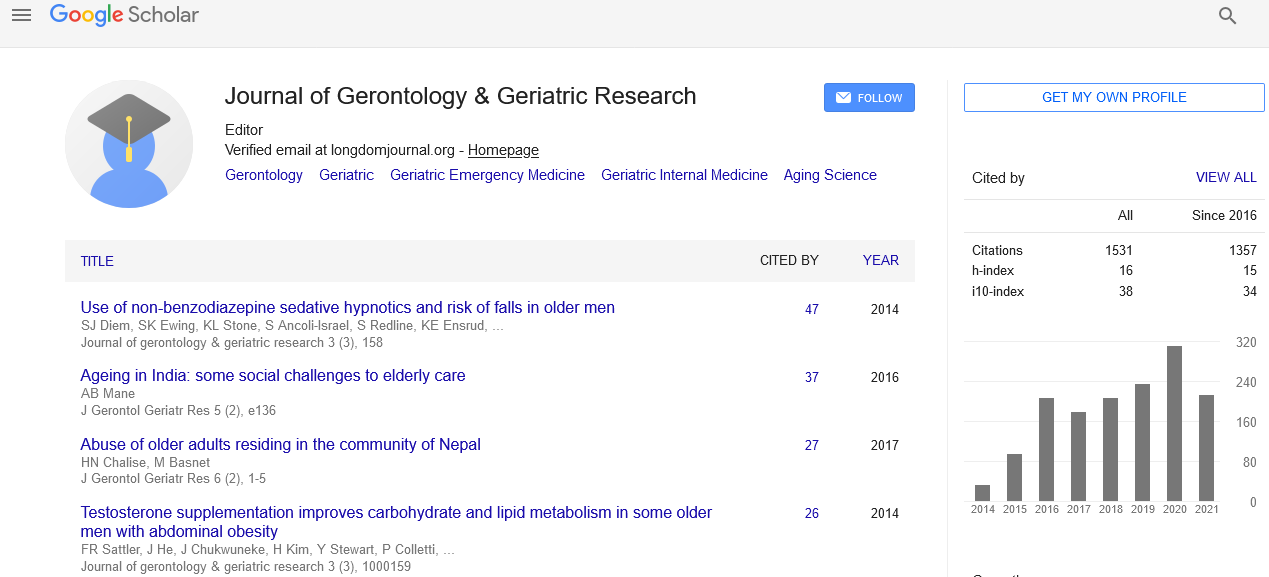PMC/PubMed Indexed Articles
Indexed In
- Open J Gate
- Genamics JournalSeek
- SafetyLit
- RefSeek
- Hamdard University
- EBSCO A-Z
- OCLC- WorldCat
- Publons
- Geneva Foundation for Medical Education and Research
- Euro Pub
- Google Scholar
Useful Links
Share This Page
Journal Flyer

Open Access Journals
- Agri and Aquaculture
- Biochemistry
- Bioinformatics & Systems Biology
- Business & Management
- Chemistry
- Clinical Sciences
- Engineering
- Food & Nutrition
- General Science
- Genetics & Molecular Biology
- Immunology & Microbiology
- Medical Sciences
- Neuroscience & Psychology
- Nursing & Health Care
- Pharmaceutical Sciences
Abstract
Attitudes Towards the Elderly among Nursing Students in Poland Initial Findings
Magda Strugala, Dorota Talarska and Jacek Wysocki
Background: Similarly to many developed countries, the demographic tendency in Poland is that of a systematic increase in the number of elderly persons in the general population structure. In 2013 in Poland the percentage of people over 65 equalled 14.7%, where the average life expectancy for women was 81.1 and 73.1 for men. It is estimated that by 2020 the percentage of elderly citizens in the Polish society will have increased by 18.2%. The aim of the research was the assessment of the nursing students’ attitudes towards the elderly in Poland. Methods: The tool used for the assessment of the attitudes towards the elderly in Poland was the KAOP scale (Kogan’s Attitudes Toward Old People Scale) first used in 1961 by N. Kogan. Statistical analysis shows that there is a correlation between the attitude towards the elderly and the type of the programme of studies (the day-programme vs. extramural programme), sex of the subjects, age and education. However, the analysis does not indicate a link between the subjects’ attitude and their marital status, place of residence, family model and the frequency of contacts with the elderly. Results: According to the Kogan scale, among 360 subjects 133 (36.9%) of them presented a positive attitude towards the elderly, and 227 (63.1%) had a negative viewpoint. 44 students (34.6%) who were raised by their parents and did not have everyday contact with older members of their families presented a positive attitude, and 83 of them (65.4%) showed a negative one. Conclusions: Longitudinal research is necessary in order to evaluate the students’ attitude towards the elderly. In order to assess the attitudes towards the elderly, it is crucial to gather country-specific tools taking into account social, cultural and religious features.


